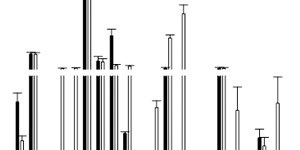Dr. José Carlos Bouso – Clinical psycologist, Pharmacology doctor - Fundación ICEERS

The main sanitary problem the users of ilegal drugs in general, and Cannabis users in particular, face, is that there are several unknown factors about the product they are consuming, such as: 1. the manufacturing and/or cultivation processes; 2. the purity, agglutinative and other chemical and/or biologic products present; 3. the effects of such products over heath; and 4. how it has been handled, preserved and sold.
How strong our body can be, or how well it generally counteracts the effects of the contaminant products, at least speaking about marijuana, as it does not equally apply to many other drugs, we have to bear in mind that there are no public services that can guarantee the safety of what is being consumed, regarding illegal products. Dramatic samples of massive intoxication due to the consumption of products that have not passed the minimum quality checks can easily be found in Spain. The most extreme is the adulterated rapeseed oil case, in 1981, which affected more than 20,000 people, many of which suffer irreversible consequences, and killed more than 300 people. Not to mention the accidental overdoses caused by the lack of information about what it is being consumed.
This endemic problem is also suffered by the Cannabis community, mostly by the patients that self-medicate with Cannabis. The fact that the marijuana is a plant does not make it easier. At any point during the processes of cultivation, drying, curing, handling, transportation and preservation of the marijuana destined for human consumption, if a minimal care is not taken with the medium used for the cultivation, hygiene of the people in charge of the curing and its handling, and with the preservation conditions, the marijuana that the user is consuming could become contaminanted, mainly by fungi, bacteria and/or pesticides. While most of these possible contaminants present in marijuana do not pose a problem for most people's health, there are others that can end up being harmful, mainly to those who use it for medical reasons.
Due to the fact that bacteria and fungi are ubiquitous in almost any ecosystem, it is quite probable that marijuana can be contaminated by any of them. Moreover, both the cultivation conditions and a disproportionate use of pesticides can make people sensitive to chemical products suffer allergies derived from the consumption of marijuana treated in this way. As these fungi and bacteria are abundant in the environment, their presence will not necessarily cause problems for the user as it is common to be in contact with them. In fact, most Cannabis users do not experience them. The problem is when these contaminants are found in higher levels than the body can counteract. Aspergillus fungi is the microorganism that has most commonly caused medical problems for users of contaminated marijuana. This is due to the fact that, when it is inhaled, its spores may remain in the lungs and produce an infection that will require medical treatment in many cases. Escherichia coli and Salmonella bacteria are also easy to transmit if people handling the marijuana are not careful with the hygiene of their hands. Marijuana handled without that kind of care can be contaminated by bacteria. If that marijuana is touched by the user, they will be at risk of having such bacteria entering their body when touching their mouth or any food. Although most people have an immune system capable of naturally fighting this kind of possible infection, people who self-medicate with Cannabis and suffer some kind of immune deficiency can be more sensitive to suffering infections derived from microbiological contaminants.

Presentation of the results obtained by
Fundación CANNA at the University
of Barcelona.
On 25th of October 2014, Fundación CANNA presented a recently elaborated report at the University of Barcelona's scientific park in which the microbiological results of 55 marijuana samples, as well as the principal cannabinoides present in such samples, were shown. The samples came from 31 clubs or Cannabis associations. The microbiological analysis was conducted by Dr. Manuel Pérez Moreno, Chemist and Professor of Pharmacology at Universidad Alfonso X el Sabio, and the analysis of cannabinoids content by Ignacio García Álvarez de Eulate, Technical Agricultural Engineer and Biotechnologist from Fundación CANNA.
Fundación CANNA is a non-profit initiative from the company CANNA, which studies and researches Cannabis plants and their active substances. Besides supporting research projects and providing a consultancy service to Cannabis users, it has a laboratory where different kinds of analyses are carried out, with the aim of knowing the content of cannabinoids, as well as the possible microbiological contaminants (bacteria and fungi) present in the different Cannabis preparations. This service is not for individuals, but rather for research centres, clubs and cannabic associations, and related companies.
In the microbiological analysis 55 samples, of an approximate weight of 300mg each, were studied. Bacterial levels (absence or presence of bacteria as well as the identification of them) and fungal levels (specially the presence of Aspergillus fungus) were determined. The handling of the samples was carried out under the right sterilisation conditions, in order to avoid the presence of contaminants resulting form the process of manipulation of the samples. Each microorganism detected was isolated and identified following routine methods of detection and identification of fungal colonies (monitoring in petri dishes with optical microscopes). The presence and identification of possible bacteria was equally made, according to habitual laboratory-based techniques. A detailed description of these techniques escapes an informational description due their high technical complexity.
From the conclusions I have received from Fundación CANNA for the writing of this article, the most important is the absence of enterobacteriaceae. As far as the technical report is concerned, this could be due to the fact that; the samples have either not been fertilised with unsterilised natural organic fertilisers, or synthetic organic fertilisers have been used; and that good hygienic conditions during the handling and dispensing of the Cannabis were shown. The rest of the bacteria levels are within the normal parameters in which other products of human consumption are found. This indicates an acceptable treatment in the cutting, drying, packaging and transportation processes, while there are samples which have shown a better treatment than others, so such conditions can be improved. There were 5 samples in particular with high bacterial levels, even though it did not transcend the normal limits. In any case, this possible “normality” is unknown when applied to smoked marijuana, as those parameters of “normality” are unknown. Therefore, it cannot be guaranteed that the values found are are within the normal range when speaking about smoked or vapourised marijuana.
Regarding the fungal levels, 3 samples were found to have Aspergillus fungus which, even though in small quantities, would be completely advised against human consumption due to its high toxicity. Several fungi species were also found in 5 samples, this probably being due to the unsuitable temperature and humidity of their storage, which would also be advised against human consumption. Another 5 samples showed significant fungal levels too, thence, their consumption should be avoided too. Finally, 15 samples presented an excellent quality profile, which denotes an exquisite care in the whole cultivation and manipulation process.

An acceptable cutting, drying, packaging and transportation treatment would reduce the risk of possible high bacterial concentrations in plants destined to be consumed.
In order to analyse THC and CBD concentrations, chromatographic techniques were used (gas chromatography). Its method was validated prior to the analysis. The verification of a chromatographic method becomes essential in order to guarantee the validity of the results, being found just 4 samples with a CBD/THC proportion higher than 1, which means that they had higher CBD concentrations than THC ones. The average amount of THC found in the 55 samples analysed was 12.16%, the highest being 19.72% and the lowest being 6.13%. It should be noted that CBD, which is not psychoactive, counteracts the psychoactive effects of THC. Therefore, samples with high levels of THC and low levels of CBD will be more psychoactive than samples with higher levels of CBD, even when the THC levels are still high. This, considered from a recreational point of view, has implications regarding the level of psychoactivity that people will experience. However, it is quite relevant to medicinal users, as CBD counteracting the psychoactive THC effects does not just counteract its medicinal properties, but also brings its own. It is good news then to see that, although timidly, clubs and cannabic associations are starting to cultivate varieties that can be useful from a medicinal point of view.
Due to the probability of the variability in concentration of cannabinoids when cultivating a plant during the drying, curing, preservation, etc., the knowledge of the different THC and CBD concentrations of the different varieties dispensed in clubs and cannabic associations is quite important to save people from unpleasant surprises and so that they can know the psychological effects of the product they are consuming will have upon them. Likewise, the same variety will not necessarily have the same proportion of cannabinoids, and so there is an interest in knowing the levels of cannabinoids in each of the final batches of product that is going to be dispensed.

In conclusion, the most interesting results of this study from Fundación CANNA show that it is necessary to maintain proper care during the handling of the samples that are going to be dispensed in clubs and associations, in order to avoid microorganisms and contaminants that can be harmful. The results also present reliable data about the average cannabinoid content, which provides information about the consumption pattern and will allow the development of comparative studies in subsequent years. We have seen that there is a considerable amount of samples unsuitable for human consumption and they are even less suitable for people who self-medicate with Cannabis. Even though just a minority of the 55 samples would not be advisable for human consumption, due to the high levels and bacterial and/or fungal diversity, this should be enough to alert clubs and associations to the fact that they could be selling samples not suitable for their members.
This report from Fundación CANNA is of great interest, precisely for these reasons: it should serve to alert clubs and associations to pay an extra care in the processes of cultivation, manipulation and preservation of the marijuana samples that they are distributing to their members. The second unquestionable implication is that the possibility that, not just clubs and associations, but also cultivators and the Cannabis users can access analysis control of the product they are using, will require further strengthening. This should be the responsibility of the public administration. In this respect, Fundación CANNA has carried out a very interesting job with the execution of this study, allowing for a better knowledge of the quality of some of the samples on the marijuana market. On the other hand, if this kind of analysis is not executed by the public administration, they should at least support and finance it.
Protecting public health does not mean merely preventing people from consuming marijuana, but also stopping people from consuming added products that are more harmful for their health than the ones that marijuana naturally contains. This should be normal for every kind of product intended for human consumption, including, for example, foods that contain high levels of saturated fat, or things that can be harmful when consumed excessively, whether or not these are legal or illegal.


